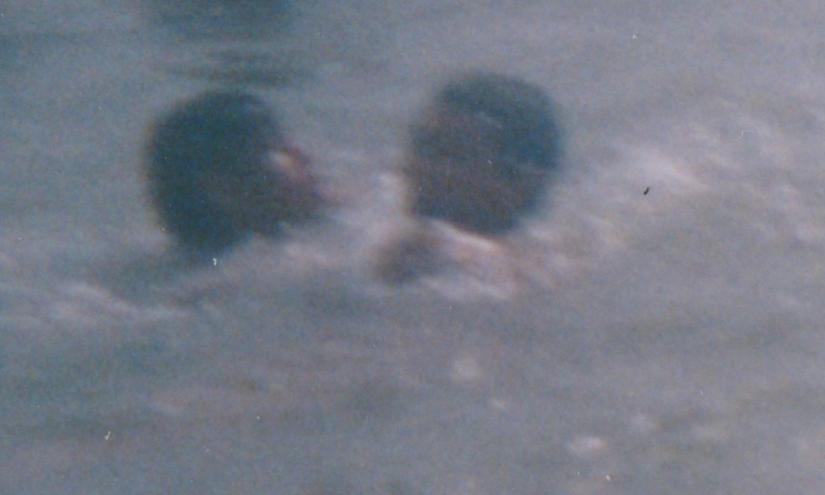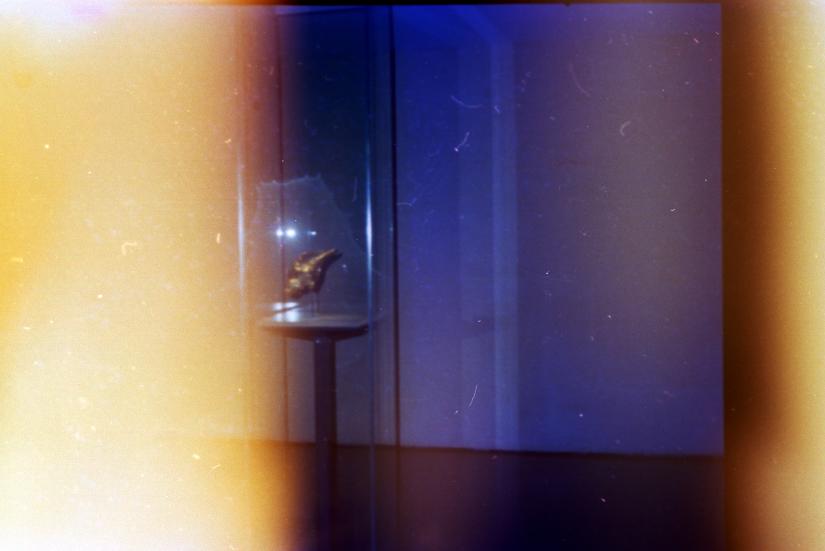If The Mountain Is Burning, Let It Burn
Associate Professor Cherine Fahd and UTS Artist-in-Residence (2023–24) Claudia Nicholson.

UTS Artist-in-Residence, Claudia Nicholson. Nick De Lorenzo.
As an artist, Claudia Nicholson always admired the work of UTS’s Associate Professor of Visual Communication, Cherine Fahd. When the opportunity came up for Claudia to apply to the prestigious UTS Artist-in-Residence program – which pairs a NSW-based visual artist with a UTS academic research partner to support the creation of new work – Cherine was the first person Claudia thought of as a mentor and collaborator. After working alongside each other for 12 months, they’ve found equal amounts of inspiration from each other’s work and ideas, and plenty of common ground.
Claudia’s forthcoming exhibition If The Mountain Is Burning, Let It Burn, a collection of video and photographic work that reexamines her personal archive of photographs, will be on show at UTS Gallery from 30 July to 20 October 2024.
Claudia – UTS Artist-In-Residence
I first came across Cherine’s work with The Chosen, Africa 2003–2004 at the Art Gallery of NSW. One image from the series captures a single person cooling off in the Paris summer. There was an element of chance and joy in her work and I thought the photograph was beautiful. When I met Cherine she was very open and intelligent, and I thought she would be fantastic to have as a mentor through the Artist-in-Residence program. Dr Marivic Wyndham, senior lecturer in the School of International Studies, also joined as a UTS research partner for my 12 month program. Marivic has a particular interest and knowledge in the politics of memorialisation in the Latin America region, which is important to my work.
If The Mountain Is Burning, Let It Burn reexamines my personal photographic archive, which is made up of a mixture of family photographs, found journalistic photos, as well as photographs I've taken.
My proposal for the residency program was to produce a new body of work in a medium, photography, that I hadn’t had the opportunity to work in before. Being guided through analogue processes and techniques by Cherine and the technical staff at UTS allowed me to learn new medium-specific skills, but also gave me the freedom to pursue an intuitive approach to image making.
In her own practice as an artist, Cherine also works with her own archival family photographs, to look, in particular, at grief and loss. Cherine gave me the permission to be playful with photography. I'm coming at it from a painter's perspective rather than in a technical way and she understood that.
For me, an important part of the residency opportunity is studio space, a considerable exhibition lead time and generous funding. It’s enabled me to access resources such as the darkroom, which is hard to come by and incredibly valuable. Importantly, the curatorial support offered by Stella Rosa McDonald and the team has helped me to realise an ambitious project.

Claudia Nicholson, The Deep Rivers Say It Slowly (still), 2023. Single channel video, 9 minutes 33 seconds. Courtesy the artist. © Claudia Nicholson 2023
Cherine – mentor and collaborator
I'd always envisioned myself being a painter and drawer, or sculptor, even. I don't think I recognised photography as an art form initially because it was so part of everyday family life.
I'm self-taught as a photographer. I was given a camera by my aunt while I was backpacking around Europe in 1999 after completing a fine arts degree. I developed a keen interest in photography as an amateur and then started using it to make art.
My expertise now ranges from family photographs through to media photographs, as well as art photography, and the way images are used more generally – for example, politically.
I've known Claudia through the Sydney art community for quite some time. We’ve both exhibited at the Museum of Contemporary Art in the C3 West project.
There’s been a number of parallels in our exhibitions. After she had a residency at Carriage Works, I had one there, too.
I think I’m a bit older than Claudia, so there’s been a really nice intergenerational element of getting to know her after following her work for a while.
I find her work quite playful. I really love the way she incorporates this personal history of Colombia and a familial history into her work in quite subtle ways. I also admire the way she uses text in her work and experiments with different materials. It’s quite a different practise to mine. It’s appealing to be drawn to works that are so far – materially and process-wise – different from your own.
Claudia is quite established as an artist now, but when I first encountered her work early on, she was still an emerging artist and there's this just lovely freedom in the works of younger artists. That sense of the unknown.
Claudia, like me, is interested in image and photographic archives, finding ways to retell stories that may have already been told or not been told in this way. She’s worked with personal archives that map 70 years of a family history, combining those archives with more public archives or found images. So, I was interested in that part of her work.
I'm also drawn to the way she thinks about her cultural identity. Our Australianness is fundamentally informed by an otherness – in her case, Colombian, and in my case, Lebanese. It’s not something you would necessarily read into the work, but it’s more a subjective underpinning. You come to archives, images or image collections through that lived experience: through a cultural experience, and through an experience of race and gender. My interest in working with her initially was to do with that shared curiosity in image archives.
There's a lovely iterative way Claudia works with the images. I enjoy watching her develop a process, and experiment with a methodology, without needing to name anything, without needing to perfect anything.
Photography is a new medium for her, so when you come to a new technique and a new process, you can't know what the possibilities are. You have to be open to anything that might happen. I get the sense she’s open to possibilities from watching her pick something up, experiment with it and assess it. Is it saying the thing it needs to say, or is it detracting from what she's trying to communicate?
It's so wonderful to come across this micro awareness of how an artist works.
Being an artist myself, sometimes I can't have that for myself because I'm in the process.

Claudia Nicholson, Conch, Museo del Oro 2013, 2024, Archival Pigment Print. Courtesy the artist. © Claudia Nicholson 2023
If The Mountain Is Burning, Let It Burn by Claudia Nicholson
30 July – 20 October
UTS Gallery, UTS Building 6
Level 4, 702 Harris St Ultimo
Exhibition opening: Tuesday 30 July, 6 – 8pm
RSVP
